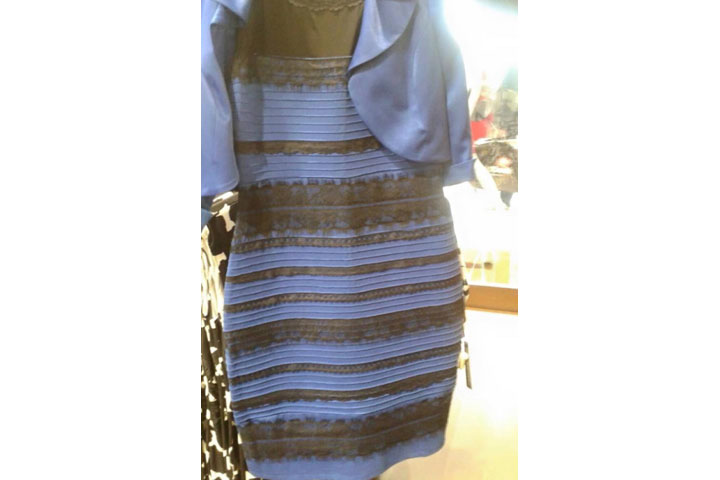It was dubbed the dress that broke the Internet. While #TheDress turned out to be blue and black, new European research is the first to study why the garment’s colours caused such controversy.

The phenomenon that had people seeing blue and black or white and gold was sparked by our colour perception, British and German scientists say. Good lighting acts as a filter and helps us determine what colours we see – in this case, a lack of it left viewers without a baseline.
Colours like red and green also act as reference points. Both were completely missing in the photo, the researchers note.
READ MORE: Here’s why no one can agree on the colour of the dress
“This would not have happened with a red dress,” Dr. Karl Gegenfurtner, of the University of Giessen, said in a statement.
“The perceived hue in one of the groups of observers is related to the fact that a white dress was exposed to cool bluish light. Just as well it could be a blue dress which was overexposed by warm light,” he explained.

Get weekly health news
Gegenfurtner and his colleagues at the University of Bradford in the U.K. conducted a small study with the help of a group of volunteers who studied the photo.
READ MORE: What colour is the dress? Debate turns Twitter into a frenzy
The scientists found that the group perceives colour shades the same way – the only difference is variation in lightness. The blue appeared on a spectrum from very light (almost white) to bright mid blue and yellow turned into an intense brown (almost black).
The colours – blue, black, white and gold – are all part of a so-called daylight locus. Light tampers with colour so daylight lighting appears blue-ish midday and in mornings and evening, it can appear yellowish.
We unconsciously filter out the light with the help of reference points, such as red and green because they’re colours outside of the locus. They’re completely missing in this photo though, forcing viewers to make a decision without these pointers.
The scientists say that other studies have suggested that people have trouble perceiving colours along the daylight locus. They can’t, for example, perceive a completely neutral grey on the screen – there’s always a tinge of blue or yellow.
At the height of the controversy, other experts threw out theories too.
READ MORE: Salvation Army uses ‘The Dress’ for domestic violence campaign
Ralph Chou, editor-in-chief of the Canadian Journal of Optometry, suggested that people’s perception of the photo could have a lot to do with the type of screen they are looking at.
“One of the problems you have with computers is that you can have a monitor set to factory defaults, or it can be alerted to fit what you find comfortable,” Chou told Global News.
“When you look at an image like this, if you have adjusted the settings on the monitor, or you are in a room that has certain types of lighting, you can have alterations to that image.”
Smartphone screens may also alter your perception of the image because the smaller screens are known to be a bit brighter and have a “blue bias,” as Chou explained it.
However, some people have denied this theory all together, claiming they still saw different colours when looking at the same monitor with a friend.
The full study was published Thursday in the journal Current Biology.
carmen.chai@globalnews.ca
Follow @Carmen_Chai








Comments